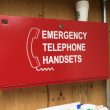FCC sets E911 deadlines
Commercial wireless carriers must meet Enhanced 911 Phase 2 location-accuracy requirements at the public-safety answering point level and comply with annual benchmarks within five years, according to an FCC report and order.
Historically, carriers have collected accuracy data from an entire state or region in order to meet FCC guidelines that set accuracy standards for handset-based solutions — typically relying on GPS technology — at 50 meters for 67% of calls and 150 meters for 95% of calls, and network-based solutions at 100 meters for 67% of calls and 300 meters for 95% of calls. But this averaging technique masked deficiencies in certain areas, where the location information associated with 911 calls has been almost worthless to first responders.
“Providing location-accuracy information on a multistate or statewide basis does not provide public safety with the information it needs to do its job effectively,” said FCC Chairman Kevin Martin during the proceedings. “Meeting location-accuracy standards on average in the entire state of New York by providing Enhanced 911 capability in Manhattan does not help first responders in Buffalo.”
Carriers now must demonstrate PSAP-level compliance in areas served by Phase 2-ready PSAPs — achieving accuracy requirements within each PSAP service territory — by Sept. 11, 2012, FCC’s order said. Provisional benchmarks have been established to ensure carriers are moving toward compliance with the new location-accuracy requirements. Carriers also must submit progress reports on each economic area in which they operate by Sept. 11, 2008.
Among the benchmarks is a stipulation that each carrier meet location-accuracy requirements within each metropolitan statistical area and rural-service area it serves and illustrate “significant progress toward compliance at the PSAP-level, including achieving this requirement within at least 75% of the PSAPs the carrier serves” by Sept. 11, 2010.
However, not everyone on the commission agreed fully with the ruling. Commissioner Jonathan Adelstein approved the ruling in part and dissented in part, noting the complicated issues involved in ensuring a reliable nationwide E911 system. Adelstein said in a statement that it was unfortunate the commission moved forward on compliance details that did not leverage the expertise of industry and public safety, including the Association of Public-Safety Communications Officials’ Project LOCATE report released in April.
However, the new rules set a reasonable compliance deadline with meaningful benchmarks to ensure progress is made on the path toward full compliance, said Jason Barbour, president of the National Emergency Number Association, in a statement. He said cell phones can be life-saving tools, with nearly 100 million wireless 911 calls being made annually — more than half of all 911 calls in some areas. However, if callers are unable to describe their location during an emergency, the ability of a 911 call-taker to help is only as good as the location information provided by the carrier.
“It is, therefore, essential that steps be taken to improve the accuracy of wireless 911 calls,” Barbour said.
The order could be a boon to system integrators tapping into the E911 marketplace, as nationwide wireless carriers eventually will need to generate thousands of compliance reports annually instead of the few hundred that have been required in the past.
“We applaud what the FCC is doing here and see it as a good move in terms of what citizens need from the 911 infrastructure,” said Bill Mertka, vice president of product management for emergency-location services vendor RedSky Technologies. “And it’s also positive for our business.”
The FCC’s order is the first action in the commission’s E911 proceeding. The FCC closed the comment period on Sept. 18, but issues are still pending.

















